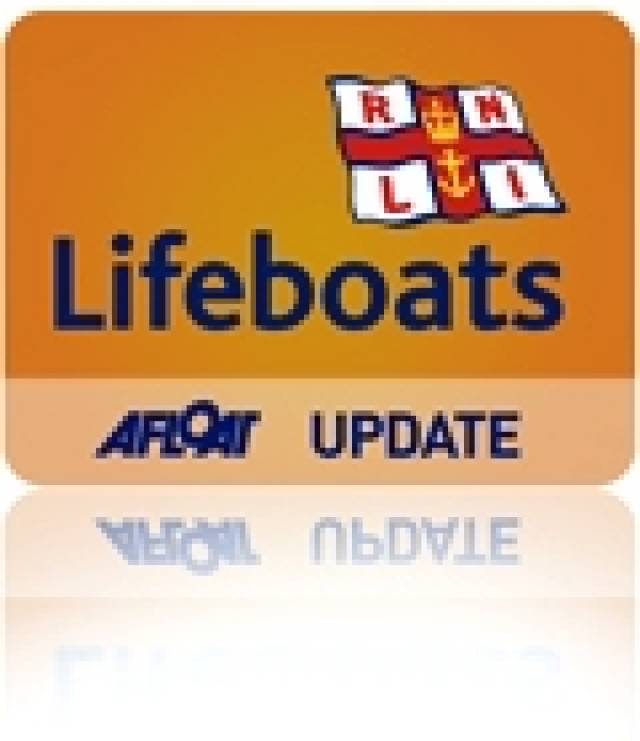#rnli – The volunteer lifeboat crew with Howth RNLI were kept busy this weekend when they responded to three callouts in 24 hours and helped bring 11 people to safety.
The first callout came at 2.46pm yesterday (Saturday 10 August) to a 22ft motorboat which had broken down south east of Lambay Island with two adults and two children on board. The craft had broken down and one of the adults and a child were suffering serious sea sickness. Howth RNLI's all weather lifeboat took the boat under two and brought the four people back to Howth Harbour where the two people were checked out by paramedics.
The second callout was received last night and involved a joint operation between Howth RNLI inshore lifeboat and Dun Laoghaire RNLI's all weather lifeboat. The call was received at 8.04pm to a report of a capsized motorboat in Dublin Bay with six people in the water. Howth lifeboat crew were first on scene and started to recover the casualties from the water. They were joined shortly after by the Dun Laoghaire lifeboat and transferred all six people onboard the all weather lifeboat to be taken back to Dun Laoghaire harbour. Irish Coast Guard helicopter Rescue 116 was also on scene, hovering above the casualties to guide the lifeboats to the scene. The group were all wearing lifejackets but were suffering the effects of the cold water and were met by waiting ambulances at Dun Laoghaire harbour and taken to St Vincent's hospital.
The third callout for the lifeboat crew was received this morning (Sunday 11 August) at 6.28am and was to a lone yachtsman who had left Holyhead on a 25ft wooden boat, when ten miles east of Howth the craft started taking on water and was in danger of sinking. The man raised the alarm by phone when all his onboard equipment failed. Howth RNLI launched their all weather lifeboat and transferred a crewmember onboard the stricken craft to help stem the ingress of water. When this was proving difficult due to the speed the water was coming into the craft the man was taken onto the lifeboat and a second lifeboat crewmember was put on the vessel to help. A tow was established and the boat was taken back to Howth harbour.
Commenting on the three callouts Howth RNLI Lifeboat Operations Manager Rupert Jeffares said, "These three callouts show a day in the life of our RNLI lifeboat volunteers here in Howth. No two callouts are the same but at the end of a busy 24 hours, eleven people have been brought to safety, six of them who were in serious trouble out on the bay when their boat capsized. It was a great result for everyone concerned.































































